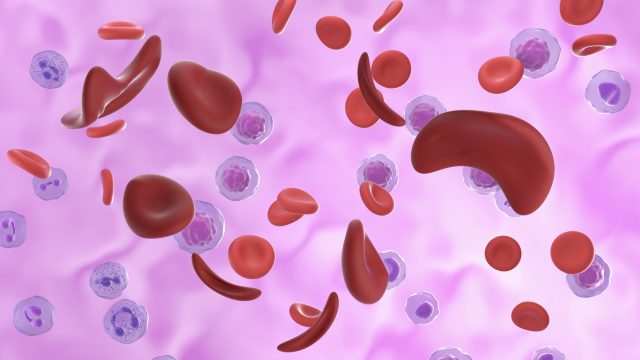
Five seemingly unconnected Black and ethnic minority Londoners discover they have superpowers in the hit Netflix series “Supacell”. The link between them? They all suffer from sickle cell anaemia, a condition that disproportionately affects people of colour.
Beyond “subtly interspersing real-life issues that affect Black Britons” into the plot, the inclusion of sickle cell anaemia is its “biggest real-life undercurrent”, wrote Lanre Bakare in The Guardian. The show began airing in June, a month after the UK’s National Institute for Health and Care Excellence (NICE) approved a new drug that may alleviate the symptoms of the illness for the thousands of people who suffer from it.
What is sickle cell anaemia?
Sickle cell anaemia is a genetic condition in which the shape of blood cells changes into “crescents or sickles”, said Bakare, which can “trigger severely painful episodes”. It affects people who inherit the sickle cell gene from both parents – rather than inheriting the gene from just one.
Only one in five people know about the disease, according to Rapman, the creator of “Supacell”, who is also known as Andrew Onwubolu. “It’s crazy how unknown it is, especially for a disease that affects so many people,” he told The Guardian.
How is it different from sickle cell disease?
Sickle cell disease is a broad set of five genetic conditions that affect red blood cells. Sickle cell anaemia is the most serious type of sickle cell disease and manifests in people who have inherited the gene from both parents, according to the NHS. Sickle cell disease is also common in people with an African or Caribbean heritage. It can also affect a smaller number of people with South Asian or Middle Eastern ancestry.
What are the symptoms?
The main symptoms, said the NHS, include painful episodes called “sickle cell crises” that can be “very severe” and last for days or weeks. It brings an increased risk of serious infection, as well as anaemia – in which the misshapen red blood cells cannot carry enough oxygen around the body, leading to shortness of breath and tiredness. The sickle cell crises can lead to coma and even death, said Bakare. It is a life-limiting condition that can shorten life expectancy by 20 to 30 years.
Why does it mostly affect Black and ethnic minority people?
This genetic variant is common among people from specific ethnic groups because the sickle shape of the red blood cell is “inhospitable to the parasite that causes malaria”, said red blood cell researcher Johan Flygare on The Conversation. Technically, therefore, sickle cell disease protects individuals from malaria. But the sickle-shaped cells break down very easily as a result, and this leads to many of the symptoms. In the UK, approximately 17,500 people live with sickle cell disease.
What is the treatment?
Sickle cell anaemia sufferers need frequent blood transfusions, said Flygare. These offer quick relief to improve oxygen levels and reduce stroke levels, but they also cause iron to build up in vital organs like the heart and liver. There is also the potential for life-threatening immune reactions, such as “transfusion-related acute lung injuries”.
Treatment options also include hydroxyurea, a relatively cheap drug that induces the production of a foetal version of the haemoglobin gene. This, in turn, leads to the formation of red blood cells and alleviates symptoms – but it also reduces the white blood cell count, which can weaken the immune system.
A new drug, called Voxelotor, has been described as “life-changing” and works by helping haemoglobin hold on to more oxygen and prevent them from becoming misshapen, said Sky News. Although it was initially rejected for widespread NHS use, NICE approved the drug in final draft guidance in May for use in the UK – with around 4,000 patients set to benefit initially.
The UK has approved the use of a new drug to treat a disease that predominantly affects people of colour






